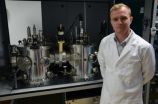(Press-News.org) Tampa, Fla. (June 26, 2014) – Academic technology transfer – the process of moving research from the lab to the market – provides intrinsic benefits to universities that go far beyond any potential revenues from licenses and royalties.
So say the authors, from five universities across the country and the Association of University Technology Managers (AUTM), in a new article from the National Academy of Inventors (NAI) that appears in the current issue of Technology and Innovation and is available Open Access.
"More than Money: The Exponential Impact of Academic Technology Transfer" is the work of lead author Valerie Landrio McDevitt, former associate vice president at the University of South Florida (USF) and current executive director of AUTM, and co-authors, Joelle Mendez-Hinds of USF, David Winwood of the University of Alabama at Birmingham (UAB), Vinit Nijhawan of Boston University (BU), Todd Sherer of Emory University, John F. Ritter of Princeton University, and Paul R. Sanberg of USF and the NAI. USF, UAB, BU and Emory are all Charter Member Institutions of the NAI.
According to the authors, the positive benefits of technology transfer for universities can be significant, including: a vibrant culture of entrepreneurship that promotes recruitment and retention of faculty, increased student success through participation in real world research, public benefits from applied research that seeks to address global challenges, economic development, increased opportunities for funding through inter-institutional and interdisciplinary grants, new start-ups and international research relationships, and increased prestige and fundraising from a stronger university brand.
"In the academic setting, technology transfer is a critical component for facilitating and sparking innovation within universities and helping to connect universities with commercial partners in the community," says co-author Paul R. Sanberg, who is founder and president of the NAI. "Technology transfer can be truly transformational to a university and to the community."
INFORMATION:
The authors:
Valerie Landrio McDevitt, a registered patent attorney, is executive director of the Association of University Technology Manager (AUTM). She received her J.D. at Emory University School of Law. Prior to joining AUTM, she served as the associate vice president for technology transfer and business incubation at the University of South Florida. She previously worked as a science advisor with a House subcommittee in Washington, D.C., and participated in the American Association for the Advancement of Science (AAAS) Fellowship program.
Joelle Mendez-Hinds is a patent marketing intern in the Technology Transfer Office/Division of Patents & Licensing at the University of South Florida in Tampa.
David Winwood is chief executive officer of the University of Alabama at Birmingham Research Foundation and senior associate vice president for Economic Development and Innovation Alliances. Prior to joining UAB, Winwood served North Carolina State University and The Ohio State University. He is a member of the U.S. Council on Competitiveness Regional Innovation Initiative Expert Committee and serves on boards of directors for the Council on Governmental Relations, Biotechnology Association of Alabama, Birmingham Venture Club, Innovation Depot, and TechBirmingham.
Vinit Nijhawan, is managing director of the Office of Technology Development and director of Enterprise Programs at the Institute of Technology at Boston University, Entrepreneurship & Commercialization (ITEC) at BU. He received his B.A.Sc. in electrical engineering from the University of Waterloo in Ontario, Canada. He has more than twenty-five years of experience building five startups and was CEO of three of them. He is a member of the Board of Trustees of TiE Global, a non-profit that fosters entrepreneurship globally; special assistant to the vice president of research; and director of the Kindle Mentoring Program at BU.
Todd Sherer, is associate vice president for research administration and executive director of the Office of Technology Transfer at Emory University. He received his Ph.D. in toxicology at Washington State University. Prior to joining Emory, he was director of the Office of Technology and Research Collaborations at Oregon Health & Science University. He served as president of AUTM and is a registered patent agent with the U.S. Patent and Trademark Office.
John F. Ritter, is director of the Office of Technology Licensing at Princeton University. Prior to joining Princeton, he served as a senior licensing professional at Rutgers University. He is secretary of the Review Panel on Conflict of Interest in Research. He received his J.D. from Rutgers School of Law and his M.B.A from Fairleigh Dickinson University.
Paul R. Sanberg, is senior vice president for research and innovation and Distinguished University Professor at the University of South Florida, and founder and president of the National Academy of Inventors. He is an inventor on over 30 licensed health-related U.S. patents and a highly cited author with more than 600 publications. He is a Fellow of the AAAS, NAI, Royal Societies (Medicine, Chemistry and Public Health), AAAS-Lemelson Invention Ambassador, and serves on the evaluation committee of the National Medal of Technology and Innovation for the U.S. Department of Commerce.
The National Academy of Inventors® is a 501c3 organization comprised of U.S. and international universities and non-profit research institutes. It was founded in 2010 to recognize and encourage inventors with a patent issued from the U.S. Patent and Trademark Office, enhance the visibility of academic technology and innovation, encourage the disclosure of intellectual property, educate and mentor innovative students, and translate the inventions of its members to benefit society. Email info@academyofinventors.org; web http://www.academyofinventors.org
The editorial offices of Technology and Innovation are located in the USF Research Park, 3702 Spectrum Blvd., Suite 165, Tampa, Florida, 33612 USA. Tel: +1-813-974-1347. Email TIJournal@research.usf.edu
Why tech transfer brings universities 'more than money'
2014-06-26
ELSE PRESS RELEASES FROM THIS DATE:
Chimps like listening to music with a different beat, research finds
2014-06-26
WASHINGTON – While preferring silence to music from the West, chimpanzees apparently like to listen to the different rhythms of music from Africa and India, according to new research published by the American Psychological Association.
"Our objective was not to find a preference for different cultures' music. We used cultural music from Africa, India and Japan to pinpoint specific acoustic properties," said study coauthor Frans de Waal, PhD, of Emory University. "Past research has focused only on Western music and has not addressed the very different acoustic features ...
Traffic light labels can give a false sense of security
2014-06-26
This news release is available in German. Sugar: red; fat: yellow; salt: green. The so-called 'food traffic lights' used in Great Britain indicate the volume of certain nutrients contained in a product by means of color-coded information on the packaging. The intention is to enable consumers to identify the advantages and disadvantages associated with a food product at a glance. The traffic light labeling system is a controversial topic throughout Europe. Since the financial crisis, it is also discussed for investment products.
Scientists from the Technische Universität ...
Tofu ingredient could revolutionize solar panel manufacture
2014-06-26
The chemical used to make tofu and bath salts could also replace a highly toxic and expensive substance used to make solar cells, a University study published in the journal Nature has revealed.
Cadmium chloride is currently a key ingredient in solar cell technology used in millions of solar panels around the world. This soluble compound is highly toxic and expensive to produce, requiring elaborate safety measures to protect workers during manufacture and then specialist disposal when panels are no longer needed.
Now, a University of Liverpool researcher has found ...
Deeper insights into protein folding
2014-06-26
Investigating the structure and dynamics of so-called Meso-Bio-Nano (MBN) systems—micron-sized biological or nanotechnology entities—is a rapidly expanding field of science. Now, scientists Alexander Yakubovich and Andrey Solov'yov from MBN Research Centre in Frankfurt, Germany, have produced a new theoretical study of a protein macromolecule changing from a coil structural conformation to a globular one. Their statistic mechanics model, just published in EPJ D, describes the thermodynamic properties of real proteins in an aqueous environment, using a minimal number of ...
New NASA images highlight US air quality improvement
2014-06-26
Anyone living in a major U.S. city for the past decade may have noticed a change in the air. The change is apparent in new NASA satellite images unveiled this week that demonstrate the reduction of air pollution across the country.
After ten years in orbit, the Ozone Monitoring Instrument (OMI) on NASA's Aura satellite has been in orbit sufficiently long to show that people in major U.S. cities are breathing less nitrogen dioxide – a yellow-brown gas that can cause respiratory problems.
Nitrogen dioxide is one of the six common pollutants regulated by the U.S. Environmental ...
Blocking key enzyme minimizes stroke injury, UT Southwestern research finds
2014-06-26
DALLAS – June 26, 2014 – A drug that blocks the action of the enzyme Cdk5 could substantially reduce brain damage if administered shortly after a stroke, UT Southwestern Medical Center research suggests.
The findings, reported in the June 11 issue of the Journal of Neuroscience, determined in rodent models that aberrant Cdk5 activity causes nerve cell death during stroke.
"If you inhibit Cdk5, then the vast majority of brain tissue stays alive without oxygen for up to one hour," said Dr. James Bibb, Associate Professor of Neurology and Neurotherapeutics at UT Southwestern ...
Study: Foreign-trained physicians frustrated at lack of residency positions
2014-06-26
TORONTO, June 26, 2014—Foreign-trained physicians feel there are not enough residency positions for them in countries such as Canada and the United States and this information was not communicated to them before they emigrated, a new study has found.
Researchers at St. Michael's Hospital surveyed international medical graduates to better understand the concepts of "brain drain," the migration of health care workers from low- and middle-income countries to higher-income countries, and "brain waste," where their skills are under-utilized or not utilized in their new country. ...
Lab monitoring tests not always ordered per recommendations
2014-06-26
Why does one physician in a walk-in practice order laboratory monitoring tests for patients more often than a colleague working down the hallway? Which factors influence the use of these important tests that can help doctors ensure that high-risk drugs are prescribed safely? Clues to these questions lie in the age and general health of the patient, and whether the doctor is a specialist or not, says Shira Fischer of the Beth Israel Deaconess Medical Center in Boston. She is the lead author of a study¹ which appears in the Journal of General Internal Medicine², published ...
First-grade teachers using ineffective instruction for math-challenged students
2014-06-26
WASHINGTON, D.C., June 26, 2014 - First-grade teachers in the United States may need to change their instructional practices if they are to raise the mathematics achievement of students with mathematics difficulties (MD), according to new research published online today in Educational Evaluation and Policy Analysis, a peer-reviewed journal of the American Educational Research Association.
VIDEO: Co-author Paul L. Morgan discusses key findings https://www.youtube.com/watch?v=xCAzLGSZ6aM&feature=youtu.be
"Which Instructional Practices Most Help First-Grade Students with ...
Decoding characteristic food odors
2014-06-26
Complementing the five basic tastes of sweet, bitter, salty, sour and umami, a large variety of odors also contribute to the overall sensory impression of a foodstuff. In recent decades, approximately 10,000 volatile food compounds have been identified. Scientists from Technische Universität München (TUM) and the German Research Center for Food Chemistry (DFA) have carried out a meta-analysis on the odorant patterns of 227 food samples.
How cognac gets its complex notes
They were surprised to find that the almost unlimited variety of food smells is based on 230 key ...





